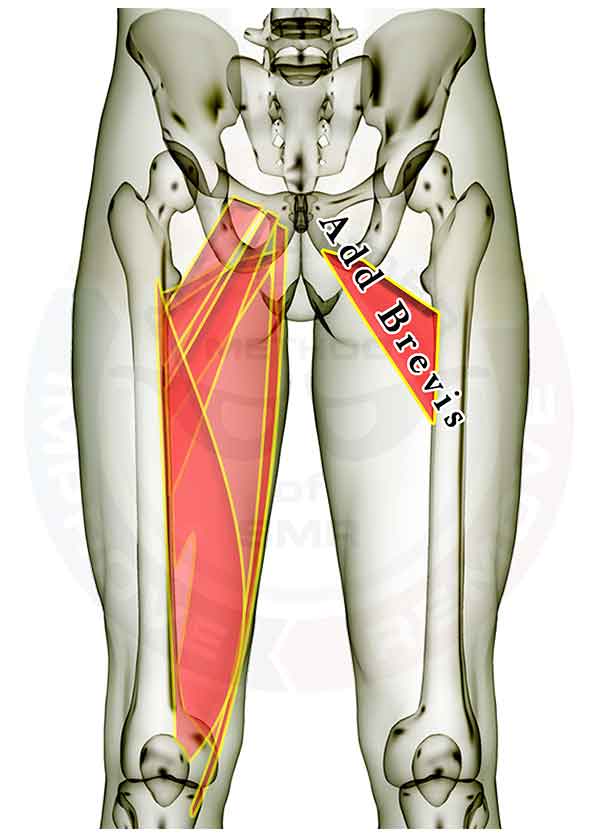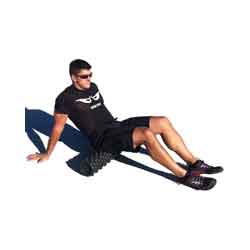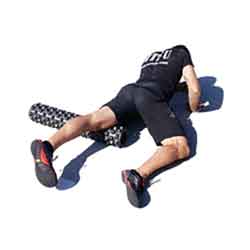
Pictured above is the adductor longus.
The leg on the left has all the muscles that cross the inside front of your thigh in addition to the adductor longus. All of the muscles in the left leg are see-through so that you can appreciate the location and size of each muscle relative to the others. You can access individual muscle detail for the quads and all the other muscles in the body with our Coach membership.
Click here for a list of all the muscles.
Click here to see the adductors as a group.
Individual muscles you might be interested in:
Muscles that attach to the thigh bone from either the spine or hip bone above (attached anywhere on the femur)
- Psoas
- Iliacus
- Rectus Femoris
- Tensor Fasciae Latae
- Sartorius
- Gracilis
- Adductor Magnus
- Adductor Longus
- Adductor Brevis
- Pectineus
- Gluteus Maximus
- Gluteus Medius
- Gluteus Minimus
- Piriformis
- Superior Gemellus
- Obturator Internus
- Inferior Gemellus
- Quadratus Femoris
- Biceps Femoris - Long Head
- Semitendonosis
- Semimembranosis
Muscles that attach to the hip and the thigh bone (femur)
- Iliacus
- Rectus Femoris
- Tensor Fasciae Latae
- Sartorius
- Gracilis
- Adductor Magnus
- Adductor Longus
- Adductor Brevis
- Pectineus
- Gluteus Maximus
- Gluteus Medius
- Gluteus Minimus
- Piriformis
- Superior Gemellus
- Obturator Internus
- Inferior Gemellus
- Quadratus Femoris
- Biceps Femoris - Long Head
- Semitendonosis
- Semimembranosis
Muscles that attach to the thigh bone (femur) and the knee cap (patella)
Muscles that cross or attach to the thigh bone (femur) and attach below the knee joint and DO NOT attach to the knee cap (patella)
- Sartorius
- Gracilis
- Semitendonosis
- Semimembranosis
- Biceps Femoris - Long Head
- Biceps Femoris - Short Head
- Gastrocnemius
- Popliteus
- Plantaris
Good luck working out those tight knots.
If you have any questions, please post a comment. We try to respond within 24 hours.
We're here to help you get more out of your training!





